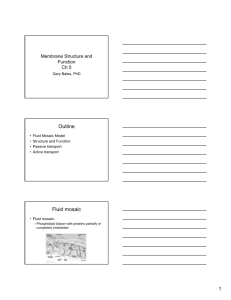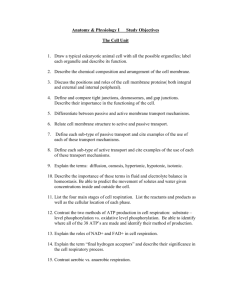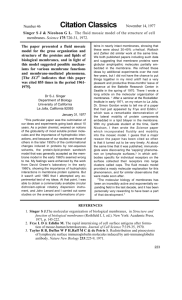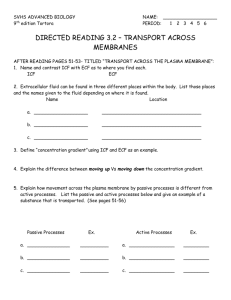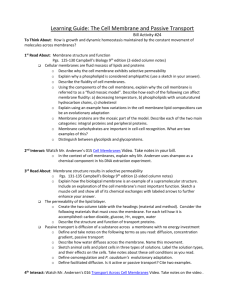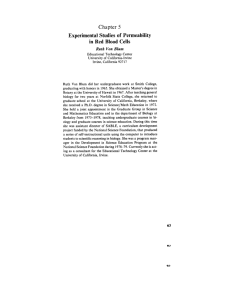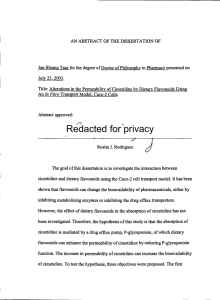Pharmacokinetic processes: absorption
advertisement
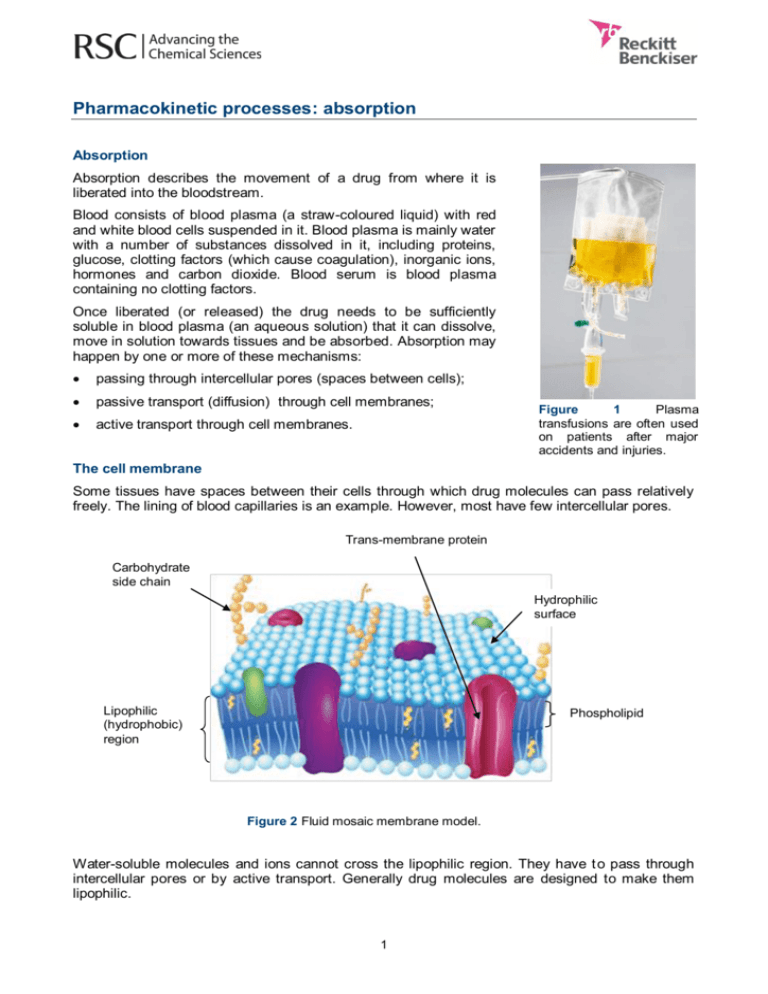
Pharmacokinetic processes: absorption Absorption Absorption describes the movement of a drug from where it is liberated into the bloodstream. Blood consists of blood plasma (a straw-coloured liquid) with red and white blood cells suspended in it. Blood plasma is mainly water with a number of substances dissolved in it, including proteins, glucose, clotting factors (which cause coagulation), inorganic ions, hormones and carbon dioxide. Blood serum is blood plasma containing no clotting factors. Once liberated (or released) the drug needs to be sufficiently soluble in blood plasma (an aqueous solution) that it can dissolve, move in solution towards tissues and be absorbed. Absorption may happen by one or more of these mechanisms: passing through intercellular pores (spaces between cells); passive transport (diffusion) through cell membranes; active transport through cell membranes. Figure 1 Plasma transfusions are often used on patients after major accidents and injuries. The cell membrane Some tissues have spaces between their cells through which drug molecules can pass relatively freely. The lining of blood capillaries is an example. However, most have few intercellular pores. Trans-membrane protein Carbohydrate side chain Hydrophilic surface Lipophilic (hydrophobic) region Phospholipid Figure 2 Fluid mosaic membrane model. Water-soluble molecules and ions cannot cross the lipophilic region. They have t o pass through intercellular pores or by active transport. Generally drug molecules are designed to make them lipophilic. 1 Passive transport Most drugs have to cross cell membranes. Exceptions are drugs administered intravenously or antasthma drugs that are inhaled. Passive transport is the mechanism by which most drugs cross cell membranes. If two solutions are separated by a partially permeable membrane, a solute will pass from the side where it is more concentrated to the side where it is less concentrated. Solute particles (molecules or ions) move in both directions until the concentration is the same on both sides. No energy is required. The driving force for movement across a concentration gradient is entropy (the second law of thermodynamics).1 Active transport Active transport is when a substance moves against a concentration gradient. When two solutions are separated by a membrane, the solute moves from the side where its concentration is low to the side where its concentration is already higher. This takes energy transferred from other chemical reactions happening in the cells such as those involving adenosine triphosphate (ATP). Ions and some molecules (amino acids and some carbohydrates) move through cell membranes by active transport. However, active transport is not very important for medicinal drugs. Examples of where it does happen include iron salts, levodopa (for Parkinson’s disease), propylthiouracil (an antithyroid drug) and fluorouracil (an anticancer drug). Figure 3 The structure of a levodopa molecule. Levodopa is used to treat Parkinson’s disease. Figure 4 The structure of a fluorouracil molecule. Fluorouracil is used in the treatment of cancer. Permeability The ease with which a drug can move through a cell membrane is measured by the drug’s permeability. One way that pharmacologists measure rates of permeation is by using artificial membranes and a technique called parallel artificial membrane permeability assay (PAMPA). However, it can only measure passive transport. Another technique measures permeation through a monolayer of real cells. This measures both passive and active transport. The caco-2 assay is an example. It is an expensive technique, but there is evidence of its impact. About 40% of drugs failed in the development phase in the early 1990’s, but in 2009 the figure fell to about 10%. This coincides with the increasing use of the c aco2 assay by the pharmaceutical industry in that period. Finding out Permeability can be investigated using cellulose tubing to represent the cell wall. What are the disadvantages of this method? What are the differences between PAMPA and Caco-2 assay? 1 See Why passive transport happens – entropy considerations and Why passive transport happens – free energy considerations. 2



